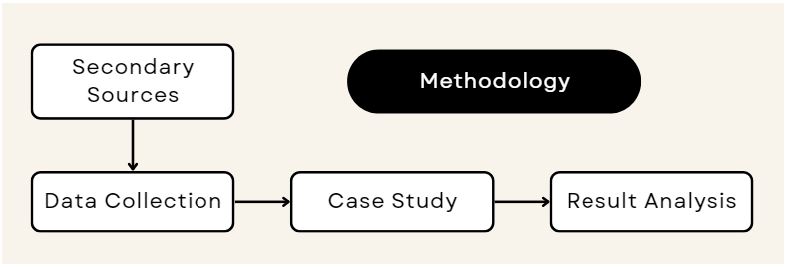Strategic Decision-Making Support Using Large Language Models (LLMs)
DOI:
https://doi.org/10.5281/zenodo.13444483Keywords:
artificial intelligence in management, large language models (llms), strategic decision-makingAbstract
This paper investigates the role of Large Language Models (LLMs) in enhancing strategic decision-making within complex business environments. As organizations grapple with increasing data complexity and volatility, traditional decision-making methods often fall short. LLMs, as advanced AI tools, offer the ability to analyze vast amounts of both structured and unstructured data, generate predictive insights, and support real-time scenario planning. Through a detailed case study of a multinational retail corporation, the paper illustrates how LLMs can improve business forecasting, facilitate dynamic scenario planning, and provide real-time decision support. The implementation of LLMs in the case study led to more accurate forecasts, better risk management, and a more agile strategic response, ultimately strengthening the organization’s competitive position. The findings underscore the potential of LLMs to serve as critical components of decision support systems, offering significant advantages in navigating today’s rapidly changing business landscapes.
Downloads
References
Mintzberg, H., Raisinghani, D., & Theoret, A. (1976). The structure of "unstructured" decision processes. Administrative Science Quarterly, 21(2), 246-275.
Grant, R. M. (2003). Strategic planning in a turbulent environment: Evidence from the oil majors. Strategic Management Journal, 24(6), 491-517.
Davenport, T. H., & Harris, J. G. (2007). Competing on analytics: The new science of winning. Harvard Business Review Press.
Chen, H., Chiang, R. H. L., & Storey, V. C. (2012). Business intelligence and analytics: From big data to big impact. MIS Quarterly, 36(4), 1165-1188.
Bommasani, R., Hudson, D. A., Adeli, E., Altman, R., Arora, S., von Arx, S., ... & Liang, P. (2021). On the opportunities and risks of foundation models. arXiv preprint arXiv:2108.07258.
Brown, T. B., Mann, B., Ryder, N., Subbiah, M., Kaplan, J., Dhariwal, P., ... & Amodei, D. (2020). Language models are few-shot learners. in Advances in Neural Information Processing Systems, 33, pp. 1877-1901.
Jarrahi, M. H. (2018). Artificial intelligence and the future of work: Human-AI symbiosis in organizational decision-making. Business Horizons, 61(4), 577-586.
Brynjolfsson, E., & McAfee, A. (2017). Machine, platform, crowd: harnessing our digital future. W. W. Norton & Company.
Mo, Y. ., Qin, H., Dong, Y., Zhu, Z., & Li, Z. (2024). Large Language Model (LLM) AI text generation detection based on transformer deep learning algorithm. International Journal of Engineering and Management Research, 14(2), 154–159. https://doi.org/10.5281/zenodo.11124440.
Zheng Lin, Zeyu Wang, Yue Zhu, Zichao Li, & Hao Qin. (2024). Text sentiment detection and classification based on integrated learning algorithm. Applied Science and Engineering Journal for Advanced Research, 3(3), 27–33. https://doi.org/10.5281/zenodo.11516191.
Qin, H., (2024). Transforming education with large language models: Opportunities, challenges, and ethical considerations. Preprint. doi:10.13140/RG.2.2.16976.52488.
Dai, S., Dai, J., Zhong, Y., Zuo, T., & Mo, Y. (2024). The cloud-based design of unmanned constant temperature food delivery trolley in the context of artificial intelligence. Journal of Computer Technology and Applied Mathematics, 1(1), 6–12.
Zeyu Wang, Yue Zhu, Zichao Li, Zhuoyue Wang, Hao Qin, & Xinqi Liu. (2024). Graph neural network recommendation system for football formation. Applied Science and Biotechnology Journal for Advanced Research, 3(3), 33–39.
Jiang, Haowei, et al. (2021). Recurrent neural network from adder’s perspective: Carry-lookahead RNN. Neural Networks, 144, 297-306.
Li, S., Mo, Y., & Li, Z. (2022). Automated pneumonia detection in chest x-ray images using deep learning model. Innovations in Applied Engineering and Technology, 1(1), 1–6.
Liu, S. et al. (2024). Infrared image super-resolution via lightweight information split network. in: Huang, DS., Chen, W., Pan, Y. (eds) Advanced Intelligent Computing Technology and Applications. ICIC 2024. Lecture Notes in Computer Science, vol 14869. Springer, Singapore. https://doi.org/10.1007/978-981-97-5603-2_24.
Li, Shaojie, et al. (2024). Utilizing the lightgbm algorithm for operator user credit assessment research. arXiv preprint arXiv:2403.14483.
Yuhong Mo, Chaoyi Tan, Chenghao Wang, Hao Qin, & Yushan Dong. (2024). Make scale invariant feature transform “Fly” with CUDA. International Journal of Engineering and Management Research, 14(3), 38–45. https://doi.org/10.5281/zenodo.11516606.
Ma, Danqing, et al. (2024). Fostc3net: A lightweight yolov5 based on the network structure optimization. arXiv preprint arXiv:2403.13703.
Shuyao He, Yue Zhu, Yushan Dong, Hao Qin, & Yuhong Mo. (2024). Lidar and monocular sensor fusion depth estimation. Applied Science and Engineering Journal for Advanced Research, 3(3), 20–26. https://doi.org/10.5281/zenodo.11347309.
Cao, J., Xu, R., & Lin, X. et al. (2023). Adaptive receptive field U-shaped temporal convolutional network for vulgar action segmentation. Neural Comput & Applic, 35, 9593–9606. https://doi.org/10.1007/s00521-022-08190-5.
Bo Dang, Danqing Ma, Shaojie Li, Zongqing Qi, & Elly Zhu. (2024). Deep learning-based snore sound analysis for the detection of night-time breathing disorders. Applied and Computational Engineering, 76,109-114.
Haoran Yu, Chang Yu, Zihan Wang, Dongxian Zou, & Hao Qin. (2024). Enhancing healthcare through large language models: A study on medical questions answering. Proceedings to 2024 IEEE 6th International Conference on Power, Intelligent Computing and Systems (ICPICS).
Hao Qin. (2024). Revolutionizing cryptocurrency operations: The role of domain-specific large language models (LLMs). International Journal of Computer Trends and Technology, 72(6), 101-113.
Hao Qin, & Zhi Li. (2024). A study on enhancing government efficiency and public trust: The transformative role of artificial intelligence and large language models. International Journal of Engineering and Management Research, 14(3), 57–61. https://doi.org/10.5281/zenodo.12619360.
Yifan Yao, Jinhao Duan, Kaidi Xu, Yuanfang Cai, Zhibo Sun, & Yue Zhang. (2024). A survey on large language model (LLM) security and privacy: The Good, The Bad, and The Ugly. High-Confidence Computing, 4(2), 100211. https://doi.org/10.1016/j.hcc.2024.100211.
Dang, Bo, et al. (2024). Real-Time pill identification for the visually impaired using deep learning. arXiv preprint arXiv:2405.05983.
Hao Qin, & Li, Z. (2024). Precision in practice: Enhancing healthcare with domain-specific language models. Applied Science and Engineering Journal for Advanced Research, 3(4), 28–33. https://doi.org/10.5281/zenodo.13253336.

Downloads
Published
How to Cite
Issue
Section
License
Copyright (c) 2024 Alexander Changeux, Stephen Montagnier

This work is licensed under a Creative Commons Attribution 4.0 International License.
Research Articles in 'Management Journal for Advanced Research' are Open Access articles published under the Creative Commons CC BY License Creative Commons Attribution 4.0 International License http://creativecommons.org/licenses/by/4.0/. This license allows you to share – copy and redistribute the material in any medium or format. Adapt – remix, transform, and build upon the material for any purpose, even commercially.









